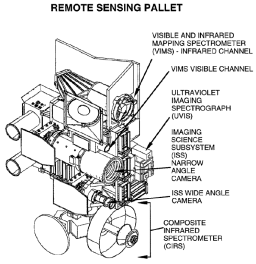Doug Ellison • Aug 20, 2007
Europlanet : VIMS - bright spots, dark lakes
by Doug Ellison in Potsdam
Two excellent talks to wrap up activities this morning - both about observations of Titan with VIMS. As with all cutting edge science, people are nervous about what they do or do not say when they have a paper pending publication - as was the case with these the first of these talks - so again, no pretty pictures but some pretty spectacular prospects for the Titanian surface.
Before speculating as to what might be going on on the surface, you have to eliminate all the possible alternatives.The presentation went into more detail on eliminating alternatives which in summary are : Could it be a cloud? (No) Does it change in size? (Yes) Does the spectra of the surface change? (Yes) What specta does the change appear to match? (Ammonia). So how do you start with a base line of the surface, and then suddenly double the size of the feature and cover it in Ammonia? Robert Nelson and his team think they've found the largest area of Volcanism (in this case Cryo-Volcanism) in the entire solar system. A future radar pass goes straight over the feature which might give us more answers - and I'm really looking forward to this being in print, in full, so you can all see the data for yourselves!
Following on from bright spots - we move to Robert Brown's discussion of observations of the lakes of Titan with VIMS (see here). This is going to be brief. They've compared the composition of the surrounding terrain to that of the lakes, and they've found a problem. Titan's got Methane lakes, right? The problem is that the photons head into this lake and they don't come out again - the spectra that they get are not entirely indicative of liquid Methane - and there are some indications that liquid Ethane might be involved. Some of the spectral bands seem to be pushed slightly suggesting all they're really seing is the spectrum of the atmosphere bouncing back off the lake. Brown didn't reach any firm conclusions - this is still a work in progress and future passes where the lake are in direct illumination ( these observations were nearly in the dark illuminated by light refracting around the terminator of Titan ) should hopefully help get some more compositional information of these lakes. With both Radar and VIMS - they're something of a black hole!


 Explore Worlds
Explore Worlds Find Life
Find Life Defend Earth
Defend Earth


